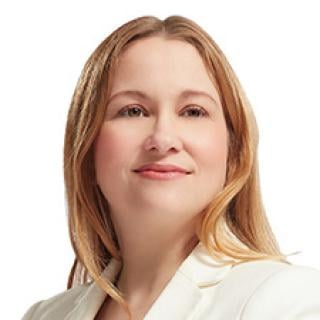As a medical student, do you ever wonder what it’s like to specialize in pathology? Meet Nicole Riddle, MD, a pathologist and a featured physician in the AMA’s“Shadow Me” Specialty Series, which offers advice directly from physicians about life in their specialties. Check out her insights to help determine whether a career in pathology might be a good fit for you.
The AMA’s Specialty Guide simplifies medical students’ specialty selection process, highlight major specialties, detail training information, and provide access to related association information. It is produced by FREIDA™, the AMA Residency & Fellowship Database®.
“Shadowing” Dr. Riddle
Specialty: Pathology
Practice setting: Hospital
Employment type:Employed by group
Years in practice:7
A typical day and week in my practice: Being in pathology, the day can vary based on what service I am on. I only do anatomic pathology, so my time is spent looking at patient slides. On Sign Out days, I get a stack of cases (i.e., slides) that I need to look at on my microscope and dictate a report that will go in the electronic health record. I usually examine the specimens for between 30–40 patient cases a day. We have a busy service with complicated specimens, so this usually takes the whole day, and then some into the next. I also have to order immunostudies, or other stains, and then review them and formulate a diagnosis.
On Frozen days I am at the mercy of the surgeons, and when they send a specimen I am there to evaluate it grossly, freeze some, and stain it to provide a diagnosis in less than 20 minutes—all to help them decide the next step of surgery. The patient is open on the operating table while they wait for our diagnosis to proceed accordingly—this is probably the most stressful part of pathology.
On Cytology days, I get patient cases that come from fine needle aspirations, body fluids or Pap tests to interpret similarly to surgical cases, though there are nuances to looking at single cells versus something “whole” with retained architecture. I also cover “adequacies,” which is when we go to endoscopy or radiology to do a quick interpretation of the aspiration biopsy to see if it is adequate for diagnosis. Some places also have the pathologist do the aspiration biopsy and I have colleagues here that do bone marrow biopsies.
I also present at tumor boards and grand rounds, and teach residents—both at the scope and in lectures.
Typically, I work 7:30 a.m. to 5:30 p.m., but some days tumor board starts at 7 a.m. and some days I have to cover the “late” shift where I have to be in-house until 7 p.m. I also cover call approximately eight weeks a year. At those times, I have to be available to do frozens at all hours of the day, typically organ transplants and derm biopsies are what come in the middle of the night. I also have to do any stat biopsies on the weekend.
The most challenging and rewarding aspects of pathology: We in pathology have been so good at being the “paraffin curtain,” meaning we run so much of what happens in a hospital but no one really thinks about it that way. What a surgeon cuts out or what chemotherapy or radiation a patient gets is all based on what we say. But it’s sad when we are not treated with respect by colleagues or when administration does not understand our importance so we are not provided the basic equipment to do our jobs. Plus, the general public doesn’t know we exist, or thinks we just do autopsies.
The most rewarding aspect is knowing that the right patient care starts with the correct diagnosis—and I provide that.
Three adjectives to describe the typical pathologist: Obsessive-compulsive, knowledgeable and friendly.
How my lifestyle matches, or differs from, what I had envisioned: Pathology has a great work-life balance, but it can vary widely based on what practice setting you are in. At some places, pathologists work 8:30 a.m.–4:30 p.m. and have a lot of downtime while there. Whereas, some other places, they work 50–70 hours a week like I do. I did not realize it could vary so widely, but that also means that there is a place for every kind of person.
One question physicians in training should ask themselves before pursuing pathology: It’s important to make sure you are OK with not seeing dozens of patients face-to-face every day. That’s because, while we can see patients to perform fine needle biopsies or after transfusion reactions, it’s not a large part of most practices. However, that is part of why most of us love it. We can help patients, but not have to talk to them all, and chart and all that jazz.
Books every medical student interested in pathology should be reading: If medical students are interested in pathology, they should read “Robbins and Cotran Pathologic Basis of Disease” and some histology books. There is histology for pathologists, but any histology book should do. We do a really bad job of teaching histology and basic pathology in medical schools—and it’s only getting worse. Just starting with the basics will put you ahead of most residents.
The online resource students interested in pathology should follow: PathologyOutlines.com!
Quick insights I would give students who are considering pathology: It’s a great specialty with a huge impact on patient care, but my patients will sit patiently and wait for me on my desk if I have an appointment or an event for my kid. But for fourth year, learn as much general medicine as you can to make you the best you can be.




